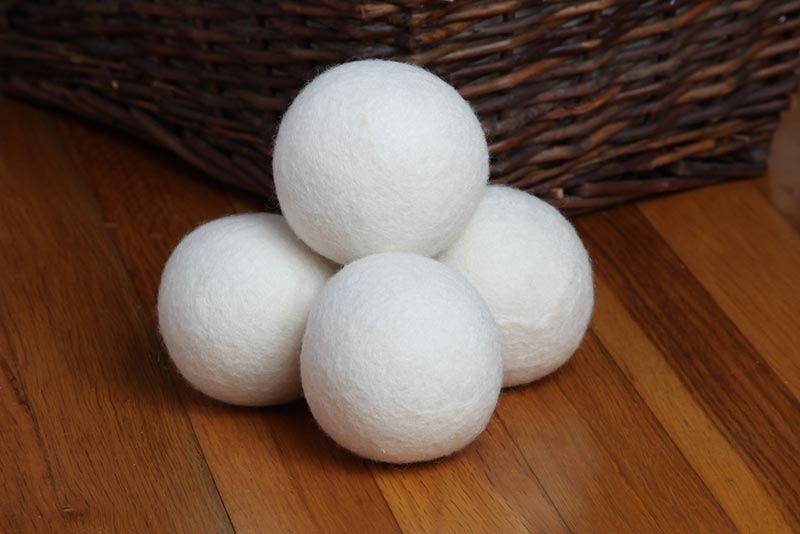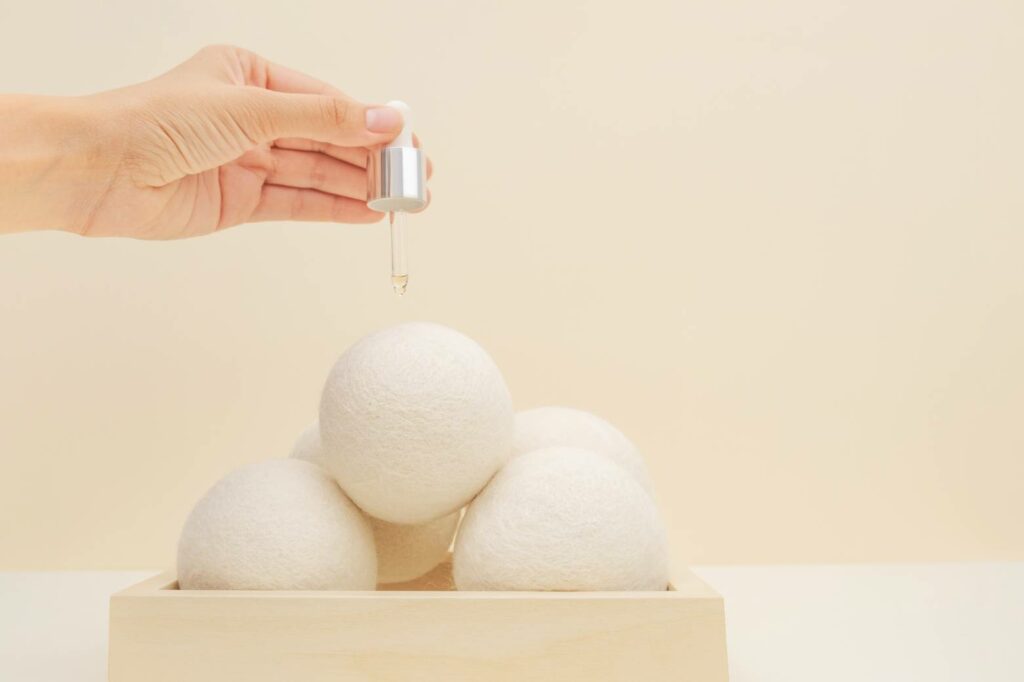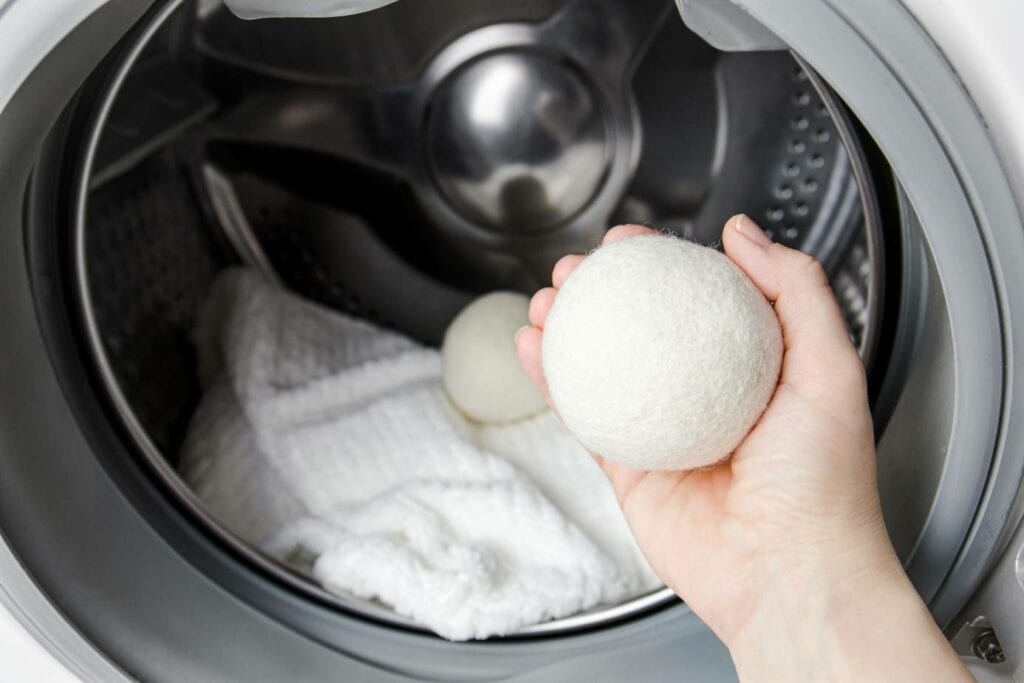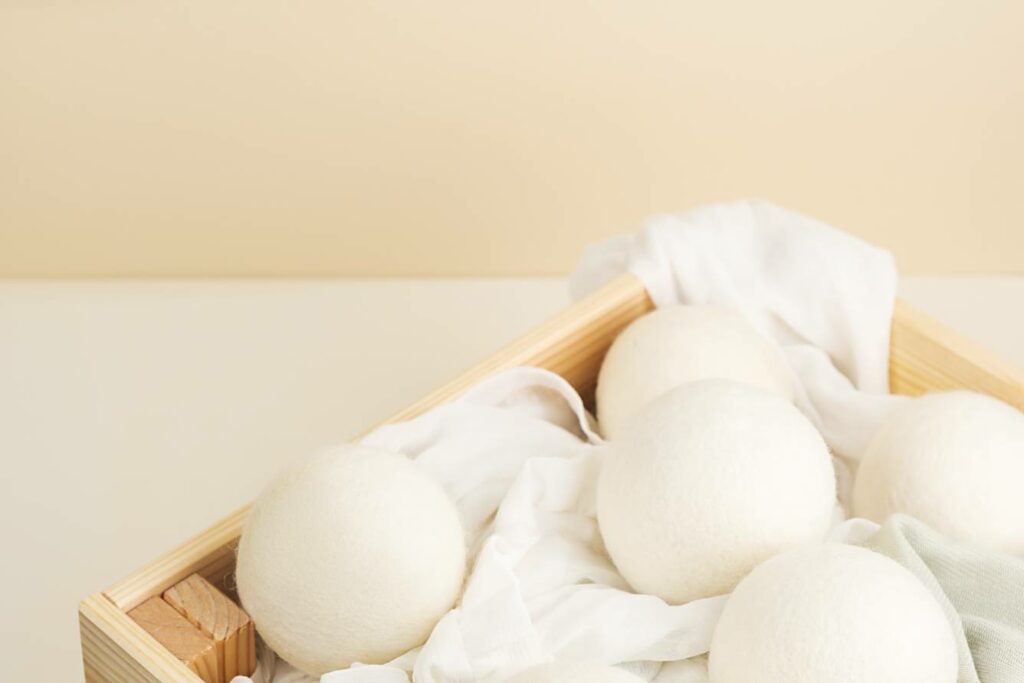What Do Dryer Balls Do & Are They Effective?
-

- Last updated:

Dryer balls can make laundry chores a little simpler. Most varieties are made of soft, fluffy wool, although you can also find plastic options. All work pretty similar to dryer sheets and help to soften laundry while reducing static and wrinkles. Most importantly, dryer balls also offer great solutions for cutting drying time to ensure you save money on your power bills.
So, how do dryer balls work, what do they do, and are they effective?
Dryer balls, like most products, gather mixed reactions from different users. Many swear by dryer balls because of their efficiency and benefits, while some think they are an unnecessary expense.
Read on for unbiased information about what dryer balls do. We will also analyze their perks and effectiveness to help you decide whether they are worth the hype.
How Do Dryer Balls Work?
Dryer balls are excellent alternatives to standard dryer sheets. While there are varieties of dryer balls, the most common are made from compressed wool and look pretty much like tennis balls.
The science behind how dryer balls work is pretty simple. Wet clothes stick together a few minutes into a dry cycle and only separate once they are relatively dry. Dryer balls tumble between layers of damp fabric and separate them faster to prevent clumping. This action allows better circulation of warm air in the machine to accelerate the drying process by up to 50%.
Moreover, the movement of dryer balls agitates the fabric fibers to minimize static cling and wrinkling. By separating the fabrics and reducing the overall friction, these balls prevent electron imbalances that cause static. Dryer balls also prove to be effective fabric softeners because brushing against cotton, linens, and towels ensures they come out soft to the touch.

What Are the Different Types of Dryer Balls?
When shopping for dryer balls, you have three main options that differ in their properties, characteristics, and effectiveness. You can also take aluminum foil, roll it up into a ball, and use it to untangle fabrics, improve warm air circulation, and reduce drying time.
If you want longer-lasting dryer balls, here are your main options.
Wool Dryer Balls
Wool dryer balls are the most reliable because they absorb fabric moisture for reduced drying time substantially. They bounce around in the dryer more rapidly, ensuring your load untangles effectively and comes out softer to the touch. Wool dryer balls cost more than other options, although they are durable and assure you value for your money.
Plastic Dryer Balls
Plastic dryer balls are long-lasting because of their hard outer layer. Although wool dryer balls are natural and the most environmentally friendly option, people that dislike getting wool fiber on their laundry can consider this option. The main downside is that plastic dryer balls can be noisy, especially compared to using wool dryer balls.
Rubber Dryer Balls
If you don’t want to use wool dryer balls and dislike the noise produced by plastic dryer balls, you have the option of buying rubber dryer balls. While most balls have the typical spherical shape, some brands offer products with spikes or a bumpy outer surface. Rubber dryer balls move around relatively fast to separate layers of fabric for reduced drying time and operate as quietly as wool dryer balls.
How to Use Dryer Balls
Understanding how dryer balls work is crucial to ensure you enjoy the best results. For the products to work effectively, they need adequate room to move around, separating your fabrics and reducing their drying time. Ideally, it would be best if you only used them to dry small or medium-sized loads.

How Many Dryer Balls Should You Use During a Single Cycle?
Your dryer balls will have instructions for how to use them. According to most brands, three balls at least 2.5 inches in diameter are enough, regardless of whether you use wool, plastic, or rubber dryer balls.
Three balls ensure balance and efficiency in drying and softening fabrics while reducing wrinkling. However, if you purchase dryer balls with a smaller diameter, you must use at least six for larger laundry loads. On the other hand, two oversized dryer balls will suffice for smaller loads.
Do your math depending on the fabrics you are drying and your load size. If your laundry takes longer to dry, consider adding one or two dryer balls to improve the outcome.
To use dryer balls, just toss them inside the dryer with your wet laundry. Dryer balls only soften fabrics, so you’ll need to add a few drops of essential oil to each ball for your loads to come out scented. Take out your laundry after a cycle and throw the balls back inside the drum until your next laundry date.
How and When to Refresh Your Dryer Balls
Rubber and plastic dryer balls don’t need refreshing. However, it would help if you cleaned your wool dryer balls yearly or every eight months, depending on the size of your loads.
Cleaning your wool dryer balls helps to repack the fibers and ensure the product remains in a pristine state for longer. Start by placing each ball into a sock and tie the opening. Start a hot water cycle on your washing machine and dry the balls in your dryer.
Pros and Cons
Dryer balls come with their own advantages and drawbacks. The following are some of them.
- Cut drying time by 30 to 50%
- Environmentally friendly and can cut back your power bills
- Reduced static
- Less fabric wrinkling for easier ironing
- Durable (can last for 2 to 3 years)
- Allows chemical and fragrance-free laundry for folk with sensitive skin
- Not so effective when drying acrylics and polyester blends
- Don’t work well in an overloaded dryer
- They don’t last forever
Dryer Balls Buying Guide
The markets have parades of dryer ball brands, and finding the best product can be an uphill task. Fortunately, a few tricks can help you find a product bound to work effectively and last for years. Here are three essential aspects to consider when making a purchase.

Material
Dryer balls can be made from plastic, rubber, or natural wool. You can choose between stiff and more malleable products if you want plastic or rubber dryer balls. Rigid plastic dry balls, especially those with bumpy outer surfaces, are excellent for households that often deal with heavily soiled clothes.
If you settle for wool dryer balls, the best products are made from boiled sheep’s wool and are hypoallergenic. They don’t contain synthetic ingredients, making them ideal for folks with sensitive skin, including babies.
Size
Dry balls vary in color, shape, and size. While most measure at least 2.5 inches in diameter, some are larger with a diameter of 3 inches or more. Larger dry balls do better at fluffing laundry and ensuring faster drying time.
If your dryer balls have a diameter smaller than 2.5 inches, you may have to use more balls per drying cycle. Bigger dryer balls are always better because they move in the dryer more freely with little risk of getting trapped between fabrics. They are also ideal for larger or bulkier loads, although you should beware that they will need more space to move around and do their job.
Quantity
The number of dryer balls in a package can differ from brand to brand. While some brands only offer three balls, others offer 20 or more balls.
Consider the size of the dryer balls to establish how many you will need to use per cycle. It is also ideal to have a few leftover balls so that you can replace any worn-out product without necessarily making a new purchase.
FAQs
Dryer balls are affordable, eco-friendly, and durable. You can still use them for creative craft projects even after they wear out! Here are some questions people frequently ask.
1. Why Are My Dryer Balls Ineffective?
While most people swear by the effectiveness of dryer balls, others seem to have nothing but bad experiences. The effectiveness of dryer balls has been proven through many unbiased tests. However, laundry needs differ, and while some people mainly have clothes made of natural fabrics, others prefer synthetics like polyester. Dryer balls work better on natural fabrics like cotton.
2. Can I Use Tennis Balls Instead of Dryer Balls?
Tennis balls can add fluff to your laundry and accelerate the drying time. However, this “hack” only works when handling loads with bulky items like towels, blankets, and comforters. You will also need to bear the risk of your loads getting stained if the tennis ball dye melts from the drying heat.
3. Do Wool Dryer Balls Leave Clothes With Lint?
Wool dryer balls can leave clothes with lint, especially if they are brand new, heavily worn out, or of poor quality. Top-quality products don’t leave any fibers on the fabrics after the first few loads. If your dryer balls suddenly leave lint on your clothes, this is a telltale sign that you should replace them.

A Quick Reference Guide: Dryer Balls vs Dryer Sheets
Dryer balls are excellent alternatives to using dryer sheets. They are eco-friendly and can be used over 1000 times! Moreover, they are unscented and don’t contain any chemicals, making them ideal for allergy sufferers.
Here is a detailed comparison of the two.
| Dryer Balls | Dryer Sheets |
| Wool balls are made from natural materials | Made from a synthetic microfiber-like polyester |
| Can be used up to 1,000 times | One-time use only |
| No chemicals, softeners or scents | Contains softeners and fragrance |
| Reduce static and drying time | Reduce static and drying time |
| Mild fabric softening | Superior fabric softening effects |
| Eco-friendly with fast decomposition once disposed | Takes longer to decompose |
Final Thoughts
We hope you now have the information to decide whether buying dryer balls is worth it. Blindly trusting brand claims can lead to buyer’s regret, and this is something we understand too well. We did the tests on your behalf to establish that these small balls moderately reduce wrinkles. They score best at reducing static cling and improving fabric softness and drying time.
Dryer balls are pocket-friendly and can last through hundreds or thousands of laundry loads with proper care. Compared to single-use dryer sheets, they are a more affordable and eco-friendly alternative. Ensure you clean them after every 80 to 100 loads of laundry and replace them once they show signs of tear and wear.
Featured Image Credit: Miro Vrlik Photography, Shutterstock
Contents


